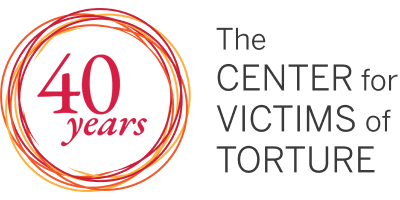Kakuma is flat, dusty and thirsty. The sun in this part of northern Kenya is especially punishing. Trees are scarce and other than the occasional camel and local boys herding goats, there are few signs of life as you drive through the countryside and into town. Then, suddenly, on the right side of the road as you head north towards the border with South Sudan, white tents and huts provided by the UN stretch towards the horizon. It is impossible to see where the massive refugee camp ends and the desert begins again.
It is impossible to see where the massive refugee camp ends and the desert begins again.”
Kakuma is located in Turkana, a remote region of Kenya that borders Uganda, South Sudan and Ethiopia. The refugee camp originally opened in 1992 to provide shelter for the “Lost Boys” fleeing atrocities in Sudan. Since then it has remained on the frontline of the region’s humanitarian crises and accommodated recurring waves of refugees from deadly conflicts in Somalia, Democratic Republic of the Congo, Burundi and elsewhere. It is now home to over 240,000 people, including those who live in the nearby “integrated settlement” of Kalobeyei.
Life is tough in Kakuma and Kalobeyei. Most refugees exist in a state of suspended animation. They are caught between the horrors they fled, and the remote possibility of resettlement in a new country. According to the UN, the average refugee has been living in Kakuma for seventeen years. Most depend on aid agencies for their food and other essential supplies, although funding cuts caused the already frugal rations to be reduced during 2022. Less than 10% of people have access to electricity. Water is accessed via boreholes and water tanks. Time moves slowly in the intense heat, and for many residents, Kakuma and Kalobeyei remain places of quiet despair.
I visited Kakuma and Kalobeyei last month with a small group of CVT staff and supporters. Kenya used to be CVT’s biggest country program and between 2011-2021 our staff provided specialized psychotherapy to 8,297 refugees and asylum seekers at different sites across the country. At least 63% of those who came to CVT for counselling were women. Nearly 2,600 people also accessed specialized trauma-informed physiotherapy treatment. Despite the high quality of these services, because of funding cuts caused by a change of international donor priorities, we have had to radically reduce the size of our Kenya team.
During 2021, we had to bid farewell to around 100 CVT Kenya staff. Currently, we have 10 colleagues working in Kakuma/Kalobeyei, and 11 in Nairobi. I met all of them while I was in the country. I told them how proud I was that together, this small team is not only sustaining a CVT presence in Kenya, they are doing extraordinary work providing care and transforming lives, especially with regard to our specialized program with LGBTQ+ refugees.
Openly living as a LGBTQ+ person is illegal in four countries that border Kenya – Ethiopia, South Sudan, Uganda and Tanzania. In Somalia, on Kenya’s eastern frontier, it is punishable by death. Homosexuality is also still technically a crime in Kenya, but the authorities do not target (or prosecute) people to the same degree as they do in other countries. This means that Kenya has become a place of sanctuary for African LGBTQ+ refugees and asylum seekers. Many have suffered unimaginable horrors before they arrive at CVT’s doors.
Take, for example, Matumaini (name changed). She grew up in a neighboring country where she was ostracized for being a lesbian. Her family accused her of being a witch, tried to kill her, and expelled her from her home. There was no option of going to the police, who are known to detain, beat, torment and sometimes sexually abuse lesbians. Matumaini eventually fled to Kenya where she spent months sleeping on the streets and contemplated suicide before coming into contact with CVT. After completing intensive psychotherapy and physiotherapy, she began to heal and grow. A fierce advocate for LGBTQ+ people, Matumaini now works in the community, helping others with similar experiences.
In their own words, coming to CVT enabled them to move beyond despair and saved their lives.”
Every LGBTQ+ refugee or asylum seeker I met spoke of the prejudice, marginalization and violence they still experience within the wider refugee community. This included a lesbian woman whose child had been set on fire by her neighbors in an attempt to drive her away. But for everyone I spoke to, it was much worse in their home country. Many had been targeted, attacked and viciously beaten by the security forces or a homophobic mob before fleeing into exile. They emphasized that in Kenya, they were able to breathe more freely.
Since our unique LGBTQ+ program started in Kenya, we have worked with several hundred clients. But the need is enormous. Whether in Nairobi, Kakuma or Kalobeyei, all the refugees I met pleaded with me to not just keep the program going, but to expand services. In their own words, coming to CVT enabled them to move beyond despair and saved their lives. One pointed to a CVT Powerpoint presentation displayed at the front of the room: “It starts with hope.”
About The Author
Dr.
Simon Adams
is President & CEO at CVT
